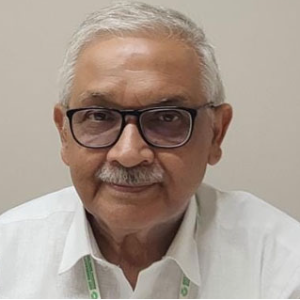Title : MIP vaccine and leprosy, our 20-year research journey from 1986 to 2005.
Abstract:
WHO targeted the following global leprosy control achievements by 2030: 120 countries with zero new autochthonous cases, 70% reduction in annual number of new cases detected, 90% reduction in rate per million population of new cases with grade-2 disability (G2D) and 90% reduction in rate per million children of new child cases with leprosy. In addition to early detection and treatment, without introduction of immunotherapy for LL with high BI (5+ to 6+), immune-prophylaxis and chemoprophylaxis it is difficult to achieve zero leprosy in glove in near future. With financial assistance from DBT, Govt of India, Principal Investigator-Prof GP Talwar Director, NII (National institute of Immunology)and Co-Investigators: H K Kar, (RML Hospital,) R S Misra (Safdarjung Hospital, Ashok Mukherjee (ICMR), Dr Rajni Rani and Rama Mukherjee(NII) and the research officers Dr Zaheer, Dr Walia, Dr Parida, Dr P Sharma, Dr Beena, Dr Raj, Dr Sarath, at different periods of project initiated the immunotherapy research project using Mw candidate vaccine for multi-bacillary(MB) leprosy patients in 1986. Mycobacterium indicus pranii (MIP; formerly known as Mw) is a rapid growing, nonpathogenic, cultivable mycobacterium belonging to Runyon Group IV, shares several antigens with M leprae and M tuberculosis. A killed candidate vaccine prepared from this bacillus whose immune modulatory effect tested in vitro and experimental animals. It was well tolerated and safe with only a blister/nodule formation at the local site of inoculation. Following intra dermal injection of this vaccine a blister/nodule appears in 3 - 4 weeks and heals of its own in another 6 to 8 weeks. In a double blind study in new MB leprosy patients under standard multidrug therapy for MB leprosy as per WHO recommendation with (trial group) and without Mw vaccine (control group) bacteriological clearances were significantly more rapid in vaccinated patients (p<0.03). 35 LL/BL patients with a high bacterial index (BI) of 6+ were completely cleared of acid-fast bacilli (AFB) after eight doses of vaccine (at 3monthly interval). Only 8 patients in the control group became bacteriologically negative in the same time period. They all had BI <4+. There was accelerated clinical regression of lesions after vaccination, lepromin conversion rates of 100% for BB (borderline leprosy), 71% for BL (borderline lepromatous leprosy) and 70% for LL (lepromatous leprosy). A significant number of immunized patients showed histological improvement (p<0.004). Thirty-six out of ninety-three showed a complete disappearance of dermal granulomas and a picture of non-specific infiltration. The vaccine did not precipitate neuritis or deformities (1,2)
In our next study we observed induction of Lepromin positivity by Mw vaccine in Lepromin negative contacts of MB leprosy patients (3,4). 3O8 Contacts tested for Mitsuda lepromin test, 109 found negative (35.4%). 95/109 eligible administered Mw vaccine, two doses ID at 6 months’ interval. Overall lepromin conversion was 98.5%. Follow up in 30 months showed no reversal of lepromin conversion. No untoward side effect except local site ulceration as in BCG vaccination.
The above finding encouraged us to try this vaccine candidate as an immunoprophylactic agent among contacts of new index cases in the field. (5). A total of 24,060 household contacts (HHC) could be vaccinated for vaccine or placebo under coding (20,194 administered two doses and 3866 received single dose). First dose:0.1ml, 1 x 109 heat killed bacilli (Mw) in normal saline) was given intradermal. Second dose: half of the first dose,108 bacilli was given after 6 months. The placebo consisted of 1/8th dose of the normal dose of tetanus toxoid. Both placebo and vaccine were given under double-blind code. Follow up done at 3, 6 and 9 years after the initial vaccination for new case detection among post-vaccination cases. Protective efficacy of contacts received Mw vaccine was 68.6% at the end of 3 years, 59% at the end of 6 years, 39.3% at the end of 9 years. Protective efficacy when both patients along with MDT and contacts received Mw vaccine. 68%, 60% and 28% at the end of 3 yrs., 6yrs, and 9yrs. respectively. Protective efficacy when patients only received Mw vaccine with MDT. 42.9% at 3rd yr., 31% at 6th yr. and 3% at 9th yr.



